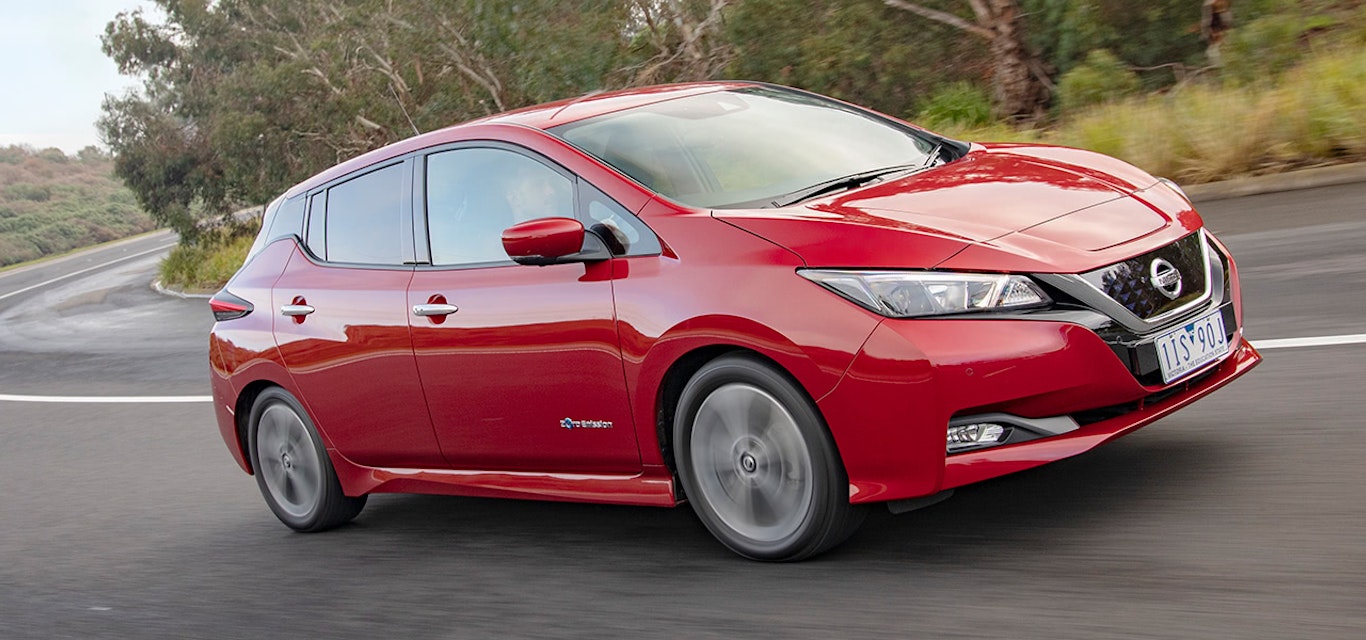First drives: Nissan Leaf
The time is right to release the second generation Nissan Leaf.
Key points:
Four drive modes
Real-world range approx. 270km
Bi-directional charging technology
$49,990 plus on-road costs
It seems like ages since the official announcement that the second generation Nissan Leaf would go on sale in Australia, but you can now head into 89 dealers nationally (two in Tasmania) and test it for yourself.
The first generation Leaf sold about 630 vehicles in the six years it was on sale in Australia. Most went into fleets and to early adopters. Range was around 120km on a good day and charging facilities other than at home were almost non-existent. Not an ideal place to start, but Nissan was the pioneer of EVs in Australia and should be recognised for that.
Moving to 2019, things have changed a lot. There are quite a few more EVs available and charging infrastructure is becoming more common. The cost of Lithium-Ion battery technology has gone down and now allows a lot more real-world range. People are talking and considering EVs as their next vehicle, so the time is right to release the second generation Leaf.
The new Leaf has four drive modes. D for maximum performance from the 110kW 320Nm electric motor. B-mode gives maximum regenerative braking. Eco-mode reduces performance to increase your mileage. Eco B+ mode maximises your range with the best of eco and regenerative functionality. Adding to Eco B+, a push of a button will select e-pedal. Nissan claims using the e-pedal under normal driving conditions will reduce the need to use the vehicle brakes up to 90% of the time.
Real-world range is around the 270km mark thanks to a larger 40kWh battery, but can depend on things like driving conditions, speed, topography, ambient temperature and the in-vehicle accessories you’re using.
Nissan has teamed up with Jet Charge, who’ll install a wall mounted AC charger in your home for just under $2000 (providing your existing supply and switchboard is up to it). This gives an empty to full charge time of about 7.5 hours. Normal AC charging from a power point will take about 24 hours, but research shows this will be more of a top-up mode.
A bit like your mobile phone, which you might charge and top up most nights. The fastest charging will come from a DC charger, which we’ll see more of with the State Government providing some subsidies for installations across the state.
What’s even more interesting, the new Leaf provides the technology for bi-directional charging. This means you can potentially use your Leaf to power your house, similar to stationary storage batteries. While the technology to use this feature isn’t available in Australia yet, it’s likely to be here in the next 12 months. Nissan claims this will be the beginning of the end of residential stationary storage.
Imagine if you could charge your car for free at work and then plug it in to power your home overnight. Shhh, don’t tell anyone!
The new Leaf is full of intelligent safety features including forward collision alert, AEB with pedestrian detection, active cruise control, 360 degree around-view monitor with moving object detection, rear cross traffic alert, high beam assist, front and rear parking sensors, lane departure warning and lane keep assist.
Available in one specification with Apple CarPlay and Android Auto connectivity, an 8” centre infotainment touch screen with a 7” driver-assist information display, heated seats and steering wheel, climate control, parking sensors, tyre pressure monitoring systems, sat-nav and 7-speaker Bose audio, you’ll want for little.
The Leaf will cost you $49,990 (plus on-road costs), which is pretty close to the price of the original Leaf. But of course time has moved on, and with around double the driving range, a full suite of safety features, a premium interior, all new styling with significantly improved driving dynamics, a five-year vehicle warranty and an eight-year battery warranty, the value proposition over the original Leaf is compelling. There is, however, a premium for an EV, but the gap is closing.
